Hot Wheels Legends Tour Winner Luis ‘2JETZ’ Rodriguez’ New ‘the Scorp*Ion’ Part 1: The Build
July 2020 • By Luis Rodriguez with Tony Thacker • Photos Luis Rodriguez and Jonathan Alicea, Fast Lane Shots, IG @fastlaneshotsTwo years ago, Luis Rodriguez with his radical half-fighter plane, half car ‘2JetZ’ based on an original concept by Dwayne Vance, won the inaugural 2018 Hot Wheels Legends Tour. Here at TorqTalk.com we kept in touch with Luis and are excited to debut his latest creation the Scorp*Ion. We’ll let Luis tell you all about it.
Luis Rodriguez ‘2JetZ’ winner of the inaugural Hot Wheels Legends Tour based on an original concept by Dwayne Vance.
“The Idea behind the Scorp*Ion came from wanting to build something the world had not seen before, something from or for a future that never existed. I wanted to create a hot rod owned by a future gearhead that was at one point modified into some sort of hovercraft or had hover capabilities— integrating sci-fi with cars if you can imagine the possibility. I absolutely did not want to just mod a car but build something that would feel like it fits in some vision of a neon cyber punk future. I always admired vehicles like Kaneda’s bike from the anime movie Akira and Syd Mead’s ‘Spinner’ from the movie Blade Runner.
Once I knew conceptually what I wanted the next step was figuring out exactly what that looked like. I began researching vehicles from sci-fi movies and every piece of future concept art I could find. Not just cars but spaceships as well. I knew it had to have an alien sensation of movement yet grounded somewhat in reality.
I wanted it to be a mid-engine, two-seater. I knew it had to have a carbon fiber body so it could be lighter than the 1,650 lb 2JetZ. I also knew I needed a smaller engine that could make power so I went with a small, lightweight, turbo four-cylinder engine. I also knew that I wanted to replicate the two forward pods of Mead’s Spinner so I studied suspension work and went back to basics.
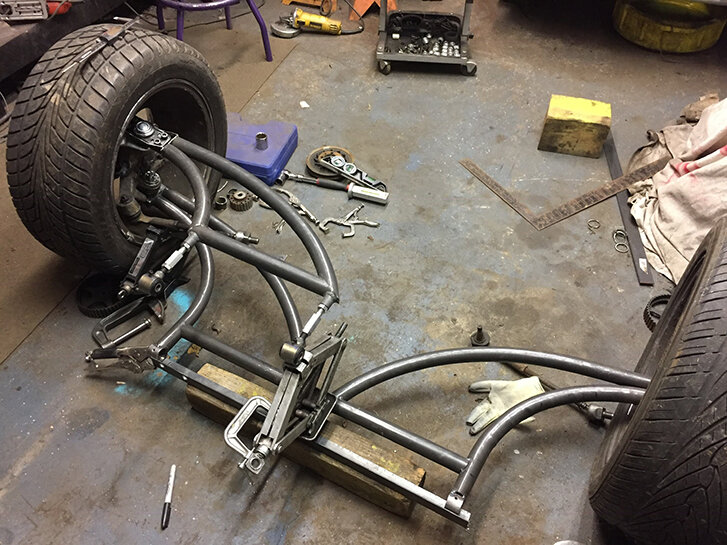
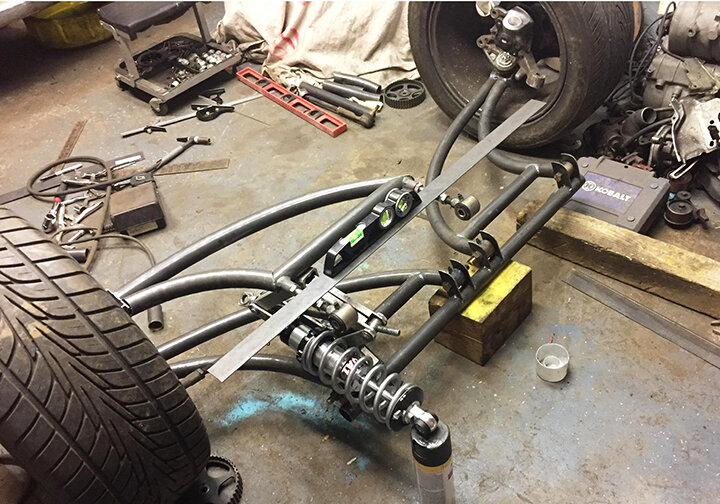
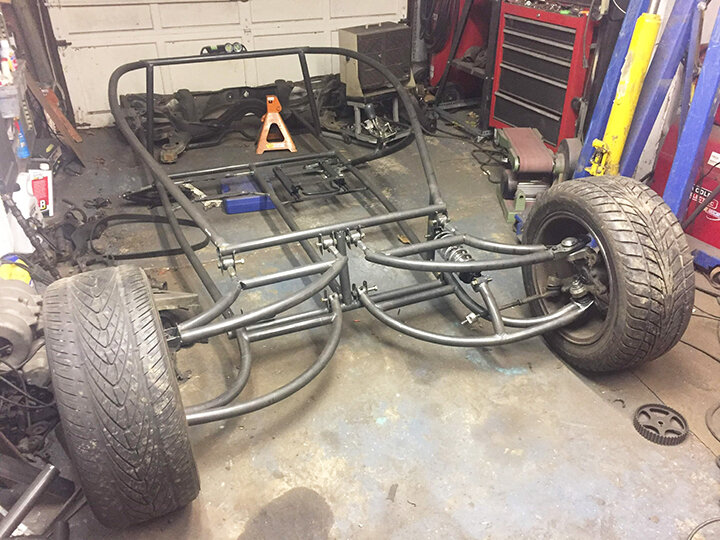
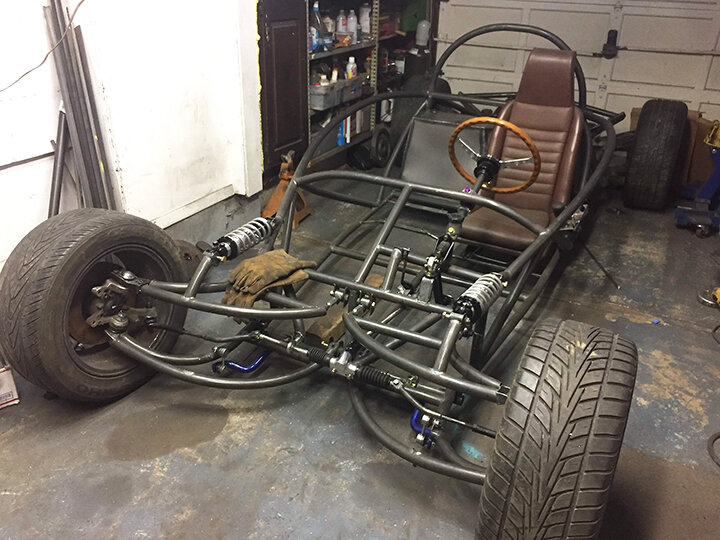
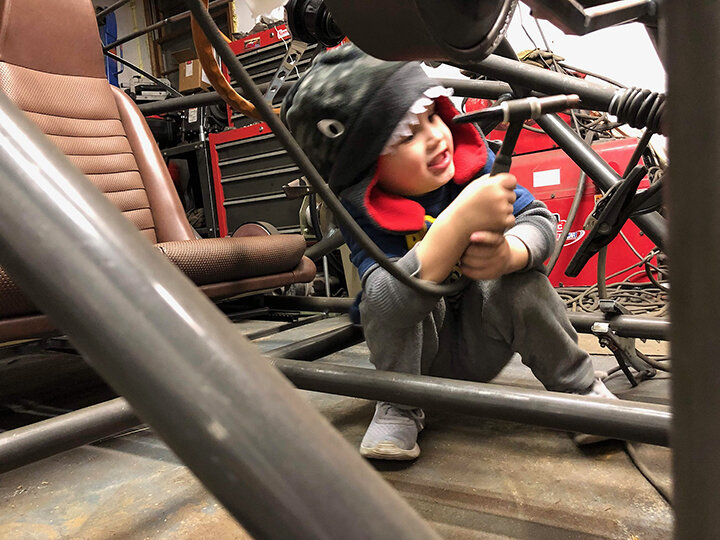
I studied Citroen and how some of the Type As were found hidden away because the French owners refused to help the Germans in WW2. I thought there was a certain automotive romance there in the battle of good against evil and something truly awesome in that. I then noticed how the Citroen 2CV suspension had a trailing arm/hydro pneumatic suspension that might just work. I realized I had the first key to my puzzle. I knew I would need trailing arms but something much more stable to achieve the look I envisioned yet be capable of handling spirited driving. I then adopted the Nissan 300ZX front hubs and calipers due to their lightweight aluminum construction. I machined the hub and made it adapt to a double slanted trailing A-arm design. I had to engineer the front suspension until it was just right. The front coil-overs are horizontally mounted to keep the weight low and centered.
I designed a floating rack-and-pinion mount that mounts to the lower control arms. It gives the driver positive road feedback, acts as another stabilizer arm, and eliminated bump steer. Both lower and upper trailing arms are connected to each other through horizontal and lateral stability links of my design. The car is surprisingly tight and responsive.
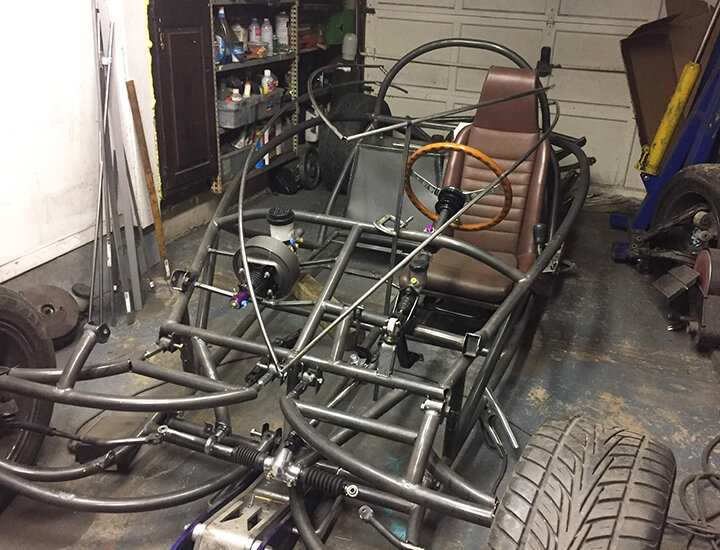

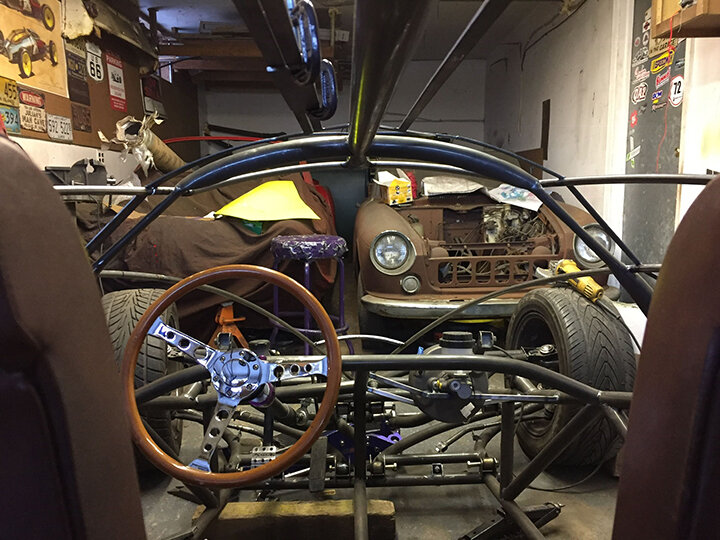

Now that the suspension in the front was set I started working on the chassis. Again, it had to be light so I bent up a 4130 Chromoly tube frame chassis and mated it to a 300ZX subframe in the rear. I’ve had great success with this rear suspension in the past so I knew it would work.
With the frame done, I focused on design and creating a car that no one had ever seen. I reached out to a couple of designers and began working with Brook from @MiddlecottSketchbattle. We worked closely to define and refine what I was looking for and I learned a lot from him about the design process. Eventually, I knew what I wanted I just needed the confidence to believe in myself to define the design within my mind. I just kept moving forward, designing each part of the body with the sensation of movement. I used welding rod taped together to physically visualize tapering curves at different heights and finally made a crude sketch of what I was looking for. From my sketch I knew it would give the sensation of flow with the windows flowing around the cockpit. I welded a frame for the glass to ensure the angle and pattern.
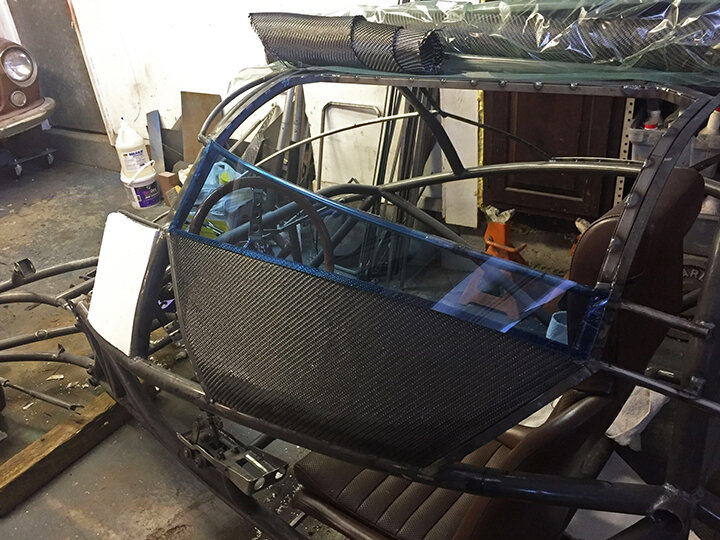
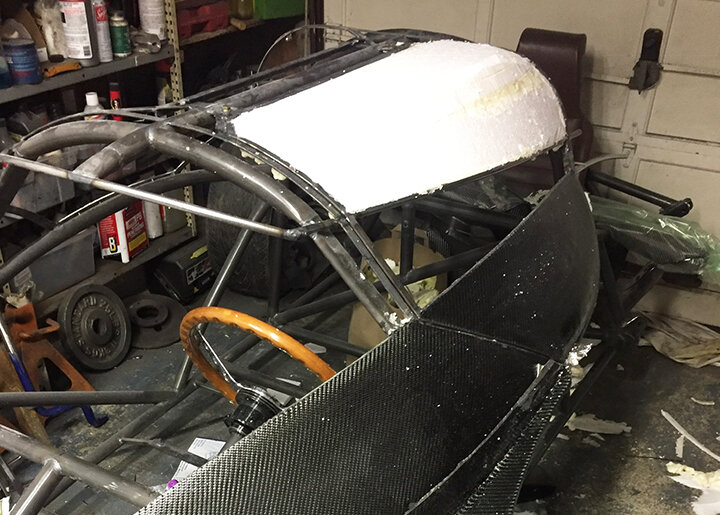
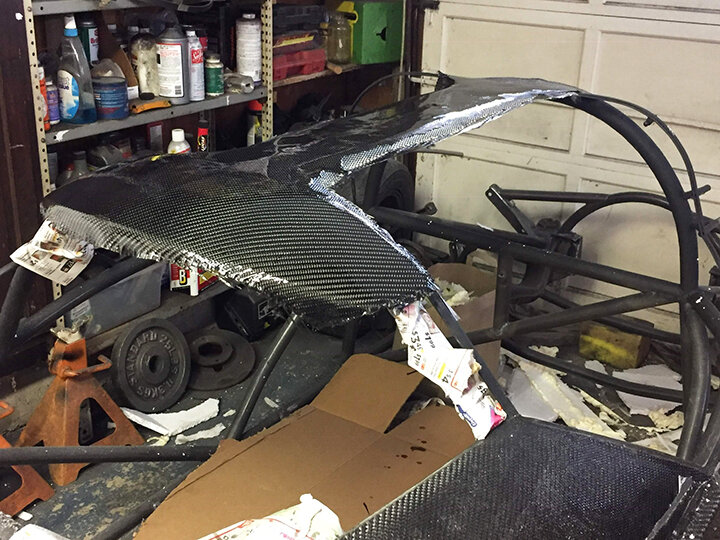
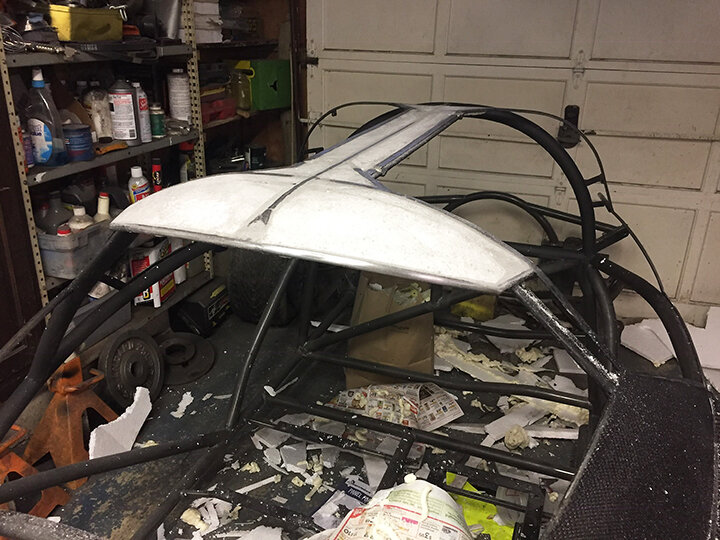
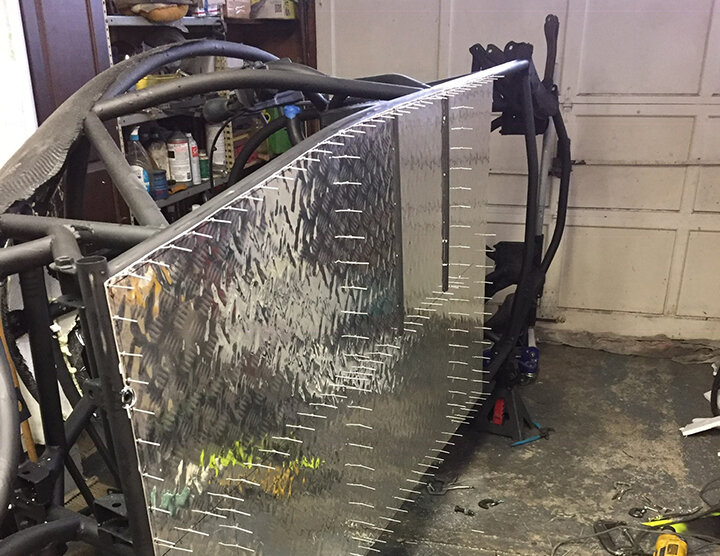
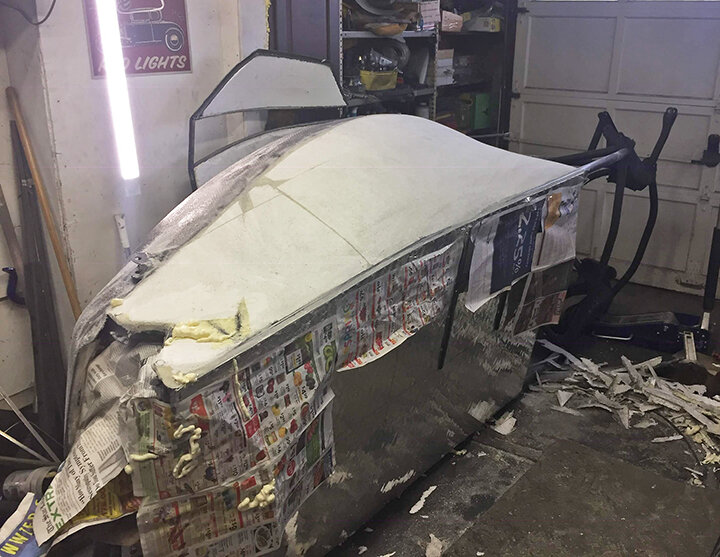

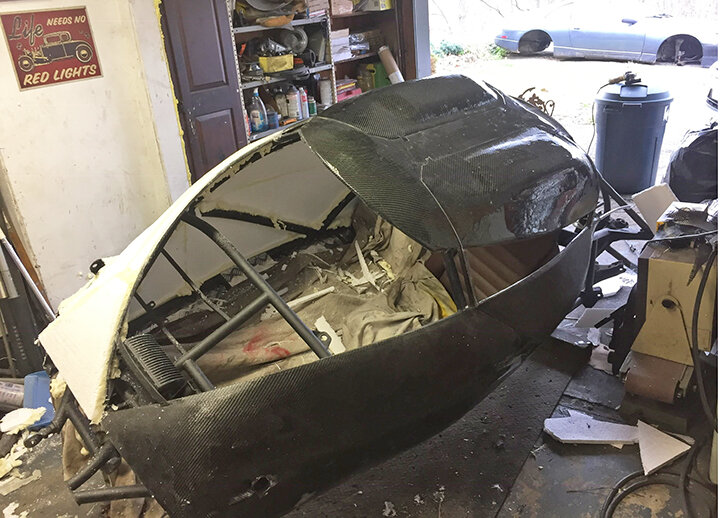
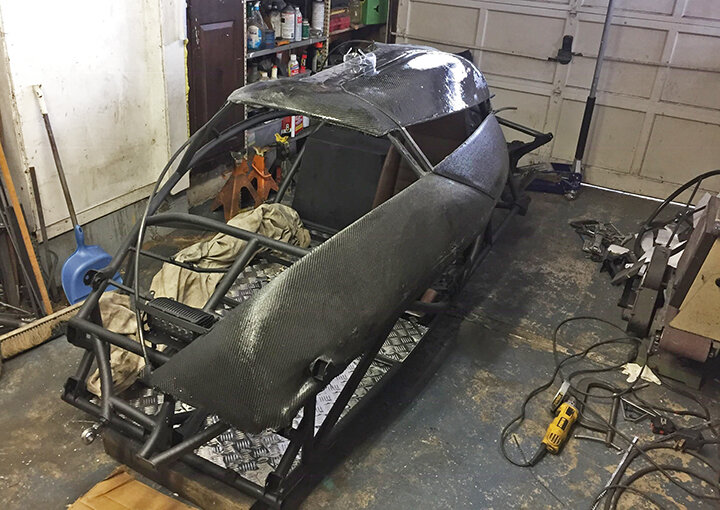
Once certain curves were determined I finished the tube frame chassis and began bonding Styrofoam to the frame. I then hand sculpted the body and hand laid the carbon fiber in layers. As usual, I focused on building and ensuring parts and panels were easily removable and serviceable so the car was built in segments.
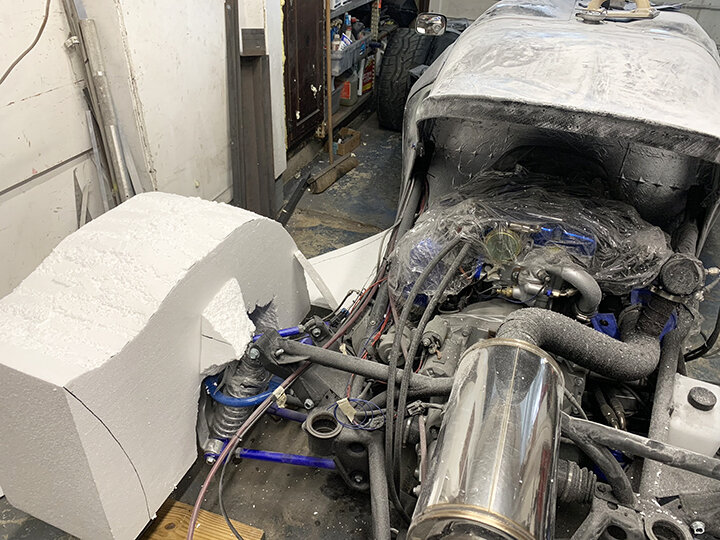
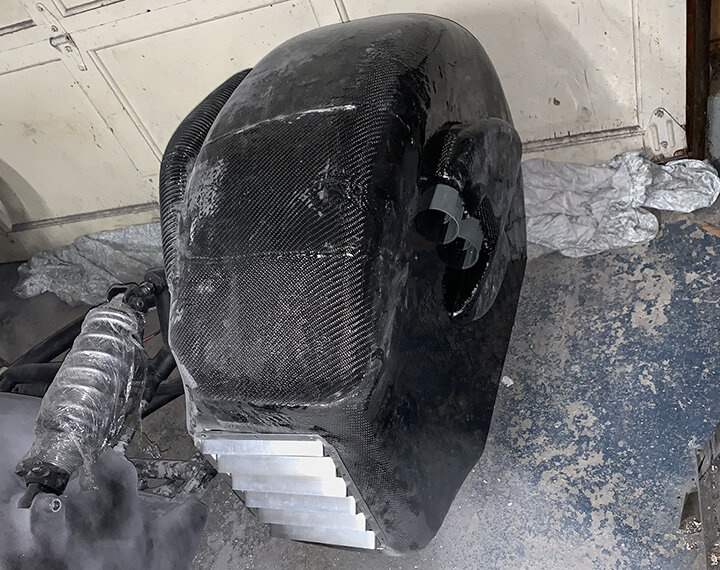
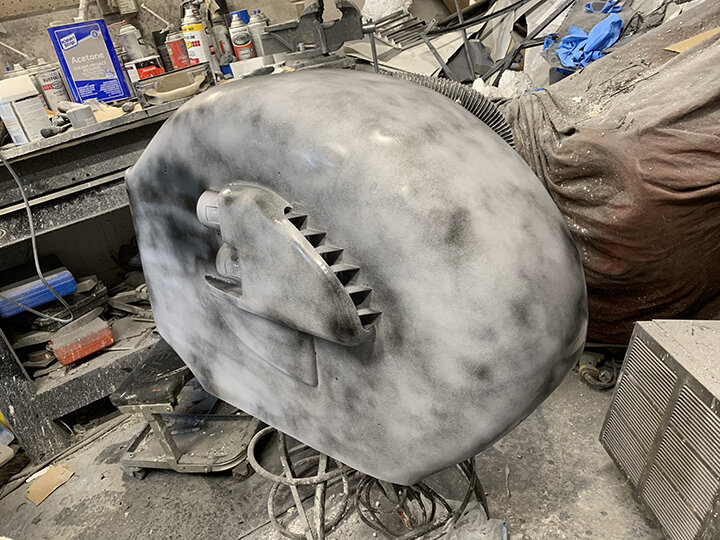
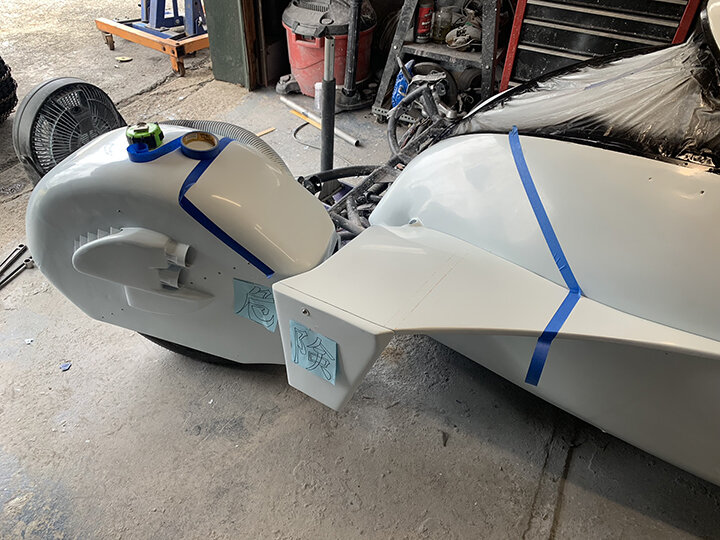

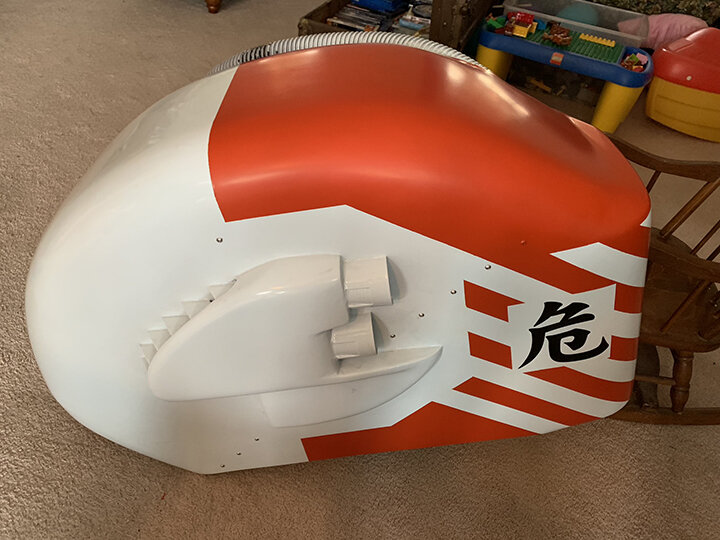

The front fenders were designed to appear as if they were retrofitted from a hovercraft or modified form of propulsion. I sculpted them from Styrofoam then hand laid the carbon. The fenders were mounted to a metal frame that mounts directly to the brake caliper. Once it was set, I mounted an aluminum vent to vent trapped air and installed a 2.5-inch shop vac hose to syphon the high pressure air at the top of the tire and redirect it to cool the back of the caliper. The “ion nozzles” on the side are actually rattle spray can tops I cut in half. I finished it with decals and air brushing a scorched area.
For the interior I bartered two leather seats from a 1970 Porsche 914. I set them as low as possible and then worked on what the rest of the interior would look like. I chose the shifter to be on the left since that would simplify the design and allow for more space in the center to keep the waist of the car thin and lend more of an hourglass shape.
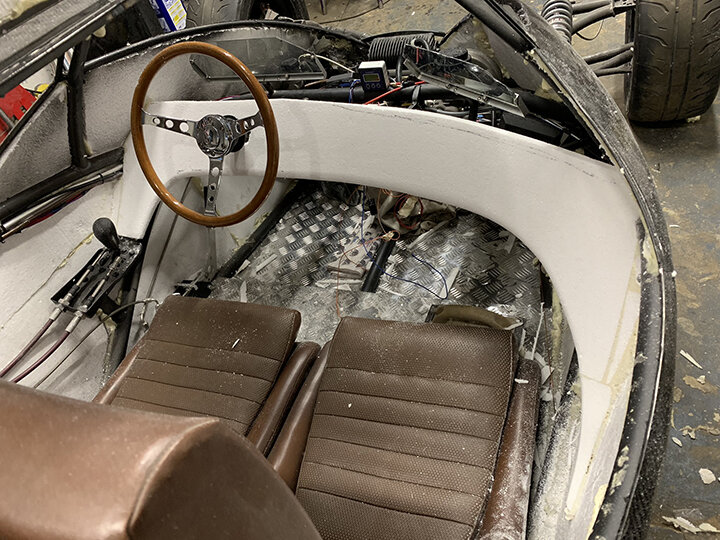
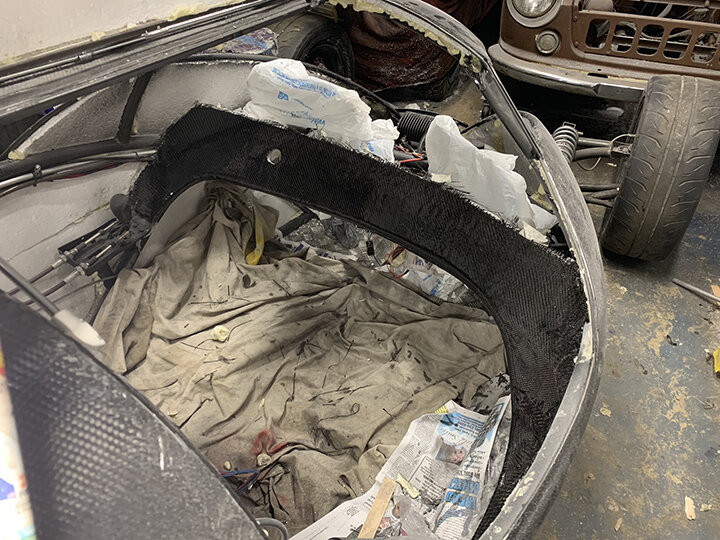
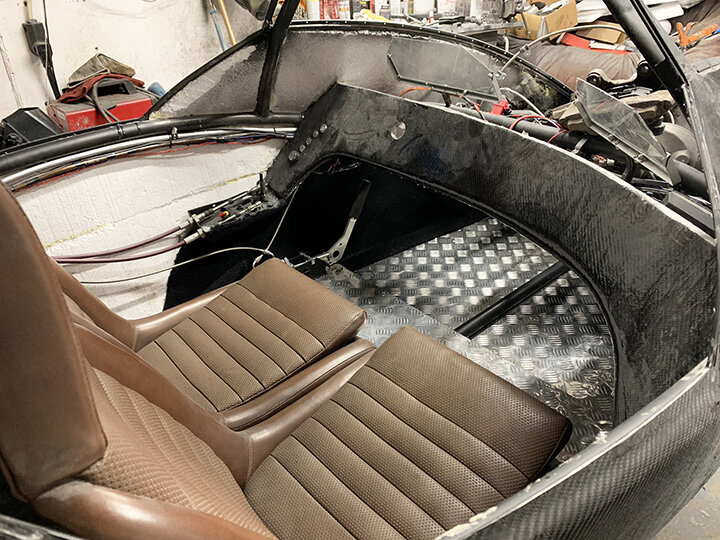
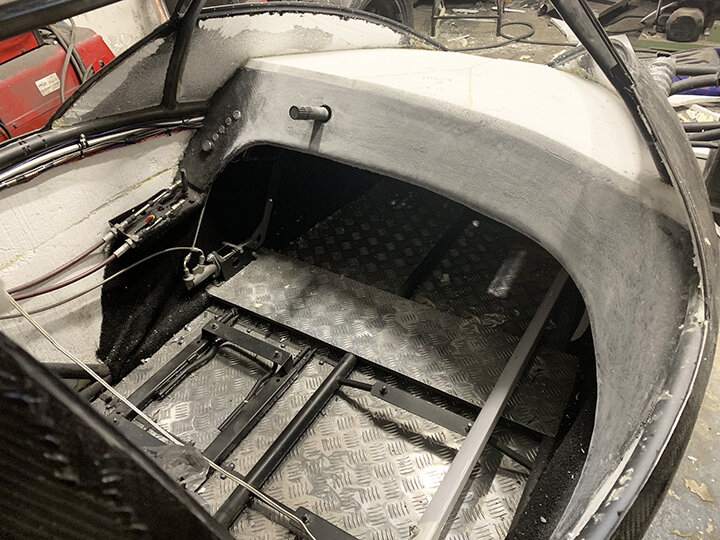
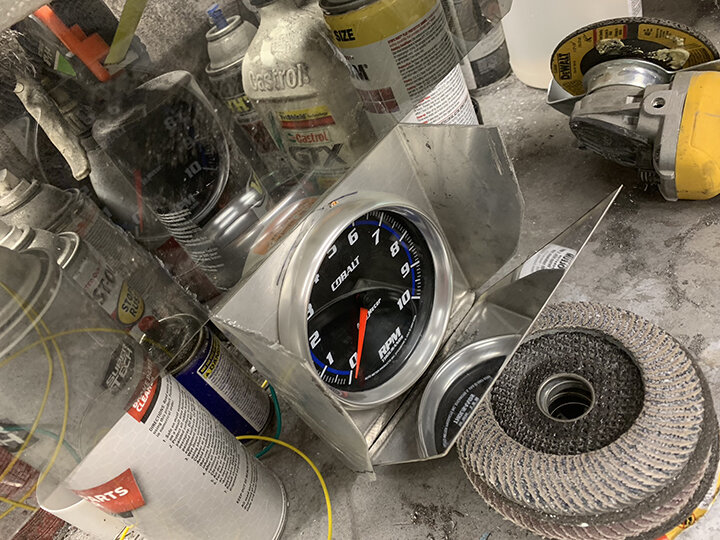
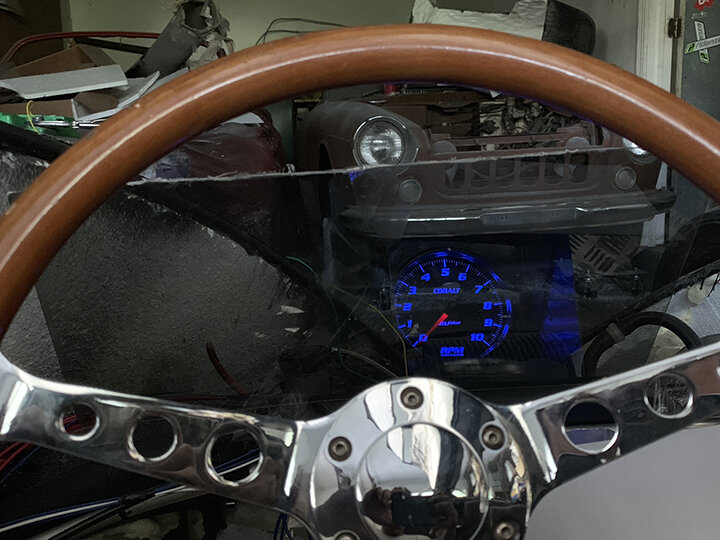
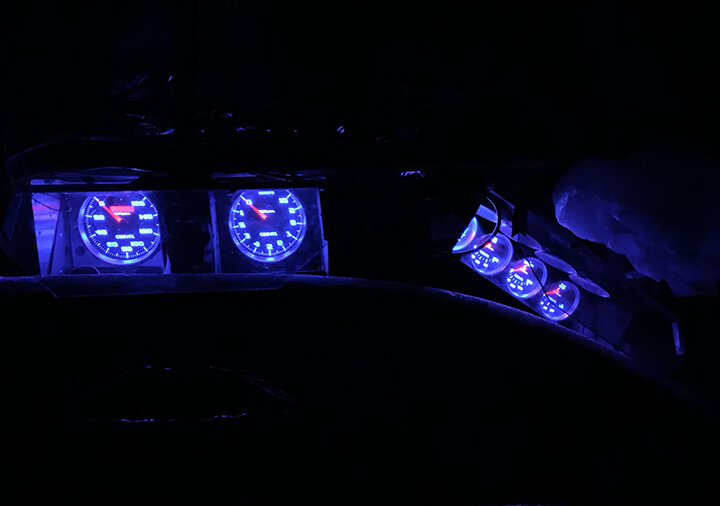
I knew I wanted the dash to be simple and ergonomic. I also wanted the dash to wrap around both the driver and passenger. I carved an asymmetrical dash out of Styrofoam, laid carbon fiber over it and wrapped it with micro suede. It really helped reinforce the impression of an alien cockpit. I did not want the gauges to be visible so I mounted the Autometer Cobalt gauges behind the dash and used their reflections to create a heads up display.
The mirrors are interesting. My friend and fellow artist, Leif, welds and makes some sweet metal sculptures. Much like myself, he digs anywhere for inspiration. He messaged me one day to say that he had raided the scrap stash from a Ferrari race team. He had a set of carbon mirrors from a winning Ferrari 458 GT racecar that he couldn’t use and thought they would work for me. After repairing the cracks in the carbon, making some mounts and painting, they fit the car perfectly.

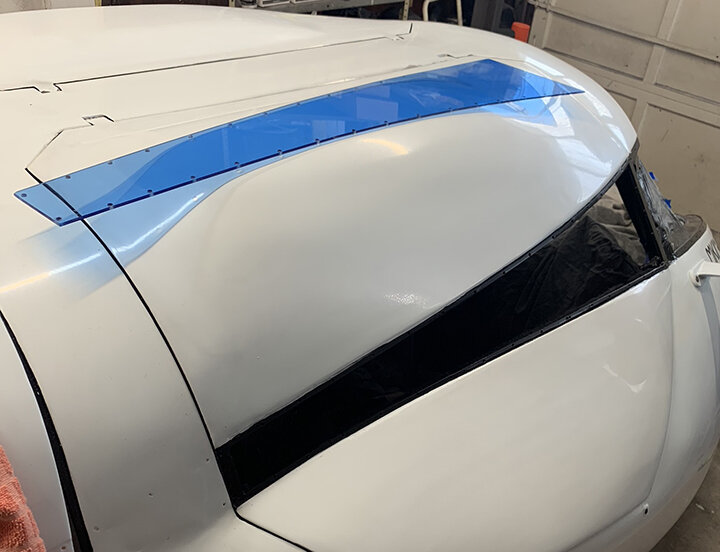
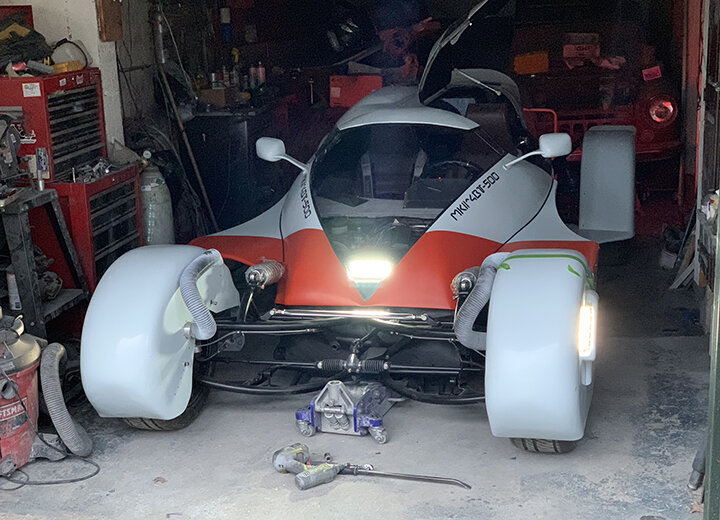
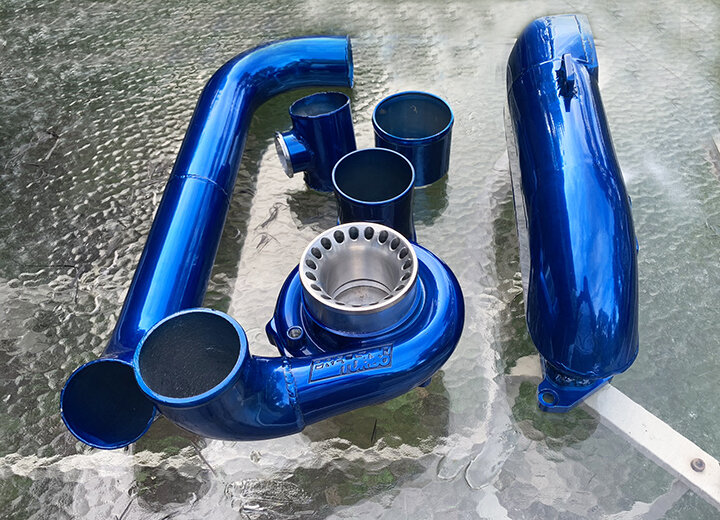
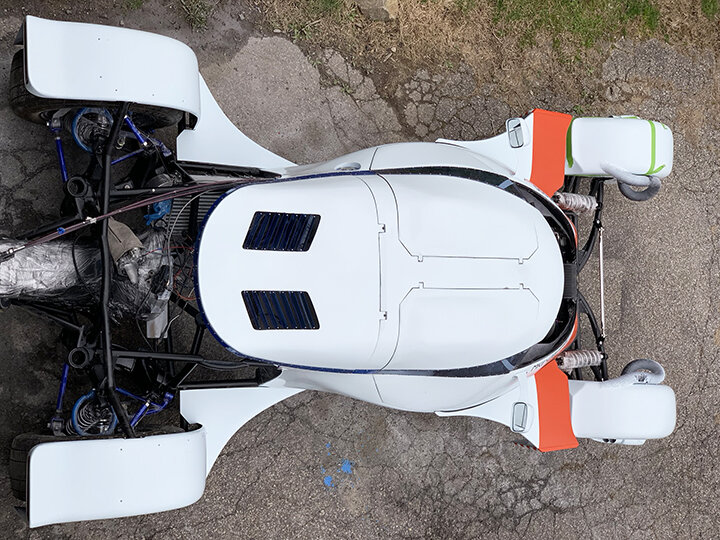
For the paint I wanted the blue glass to pop, so i decided on an arctic white color. I also wanted to incorporate orange color highlights inspired by the plasma rifle in District 9.

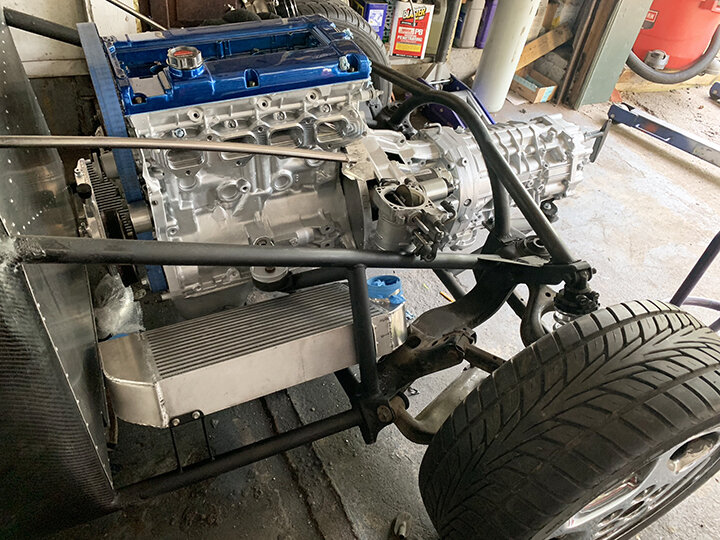

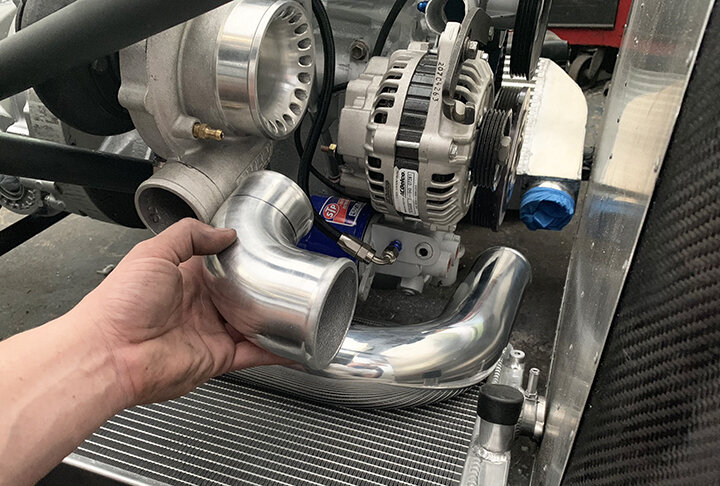


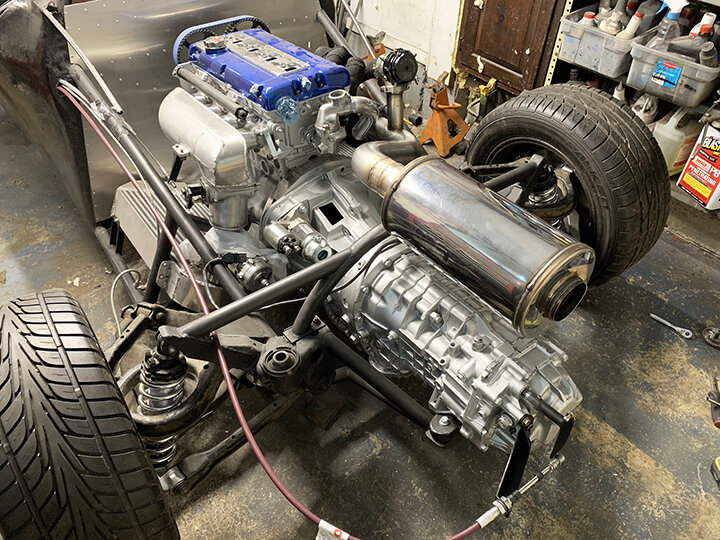

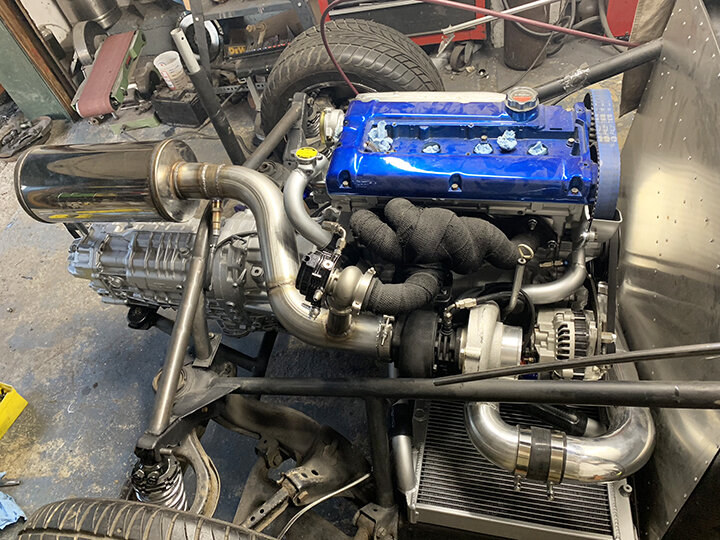
For the drivetrain I thought since Mitsu guys battle Subaru people at the track, it would be comical to bring these two families together. It’s a mechanical Shakespearean tragedy. The motor is a 1990 Mitsubishi 4g63 turbo from an Eclipse GSX married to a transmission from a 2010 Subaru Sti six-speed. I eliminated the output shaft and I’m using the transmission as a trans axle.
I gotta say after the Scorp*Ion started to come together every once in a while I would be overcome by a maniacal laugh as I began to see what the finished product would look like. It’s more than just a car or a hot rod. It’s my dream and vision of the future. I just hope that my design inspires others to go and fabricate their own reality by building one dream at a time.”
Vehicle: the Scorp*Ion - custom built one off
Owner/builder: Luis Rodriguez
Powertrain
• Engine: 1990 Mitsubishi Eclipse GSX 4g63 turbo. ARP main cap bolts and head studs
• Turbo: Precision 6062, Tial blow-off valve and MVR wastegate
• Performance goal: 500 hp on 93-octane pump gas
• Crank pulley: ATI Dampened
• Crank pickup: Kiggley 12 tooth
• Flywheel: Aasco
• Clutch: Act
• Timing belt: Kevlar
• Pistons: Wiseco
• Rods: Manley
• Cams: Crower 272
• Valves: Ferrara
• Ignition: 300 m coil-on plug
• Engine management: AEM EMS4




